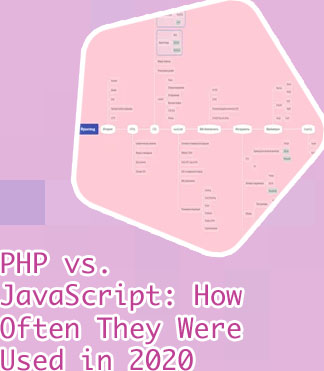Javascript backend
The JavaScript engine functions in two stages:
JS, namely Node.js, uses another I/O model, known as non-blocking I/O. JS, in contrast to PHP, always has one active thread. All requests are queued, and once the server finishes processing one I/O request, it immediately takes on the next in a queue without waiting for any action from the client’s side. As practice shows, such an algorithm of query processing is fast and efficient; thus, JS demonstrates higher performance and throughput than PHP ceteris paribus. However, far from all websites need this. An interesting fact is that node-based tools were created on PHP too, but they couldn’t compete with the extremely popular and efficient Node.js. Javascript for backend development In September 2015, Node.js v0.12 and io.js v3.3 were merged back together into Node v4.0. This merge brought V8 ES6 features into Node.js and a long-term support release cycle. As of 2016, the io.js website recommends that developers switch back to Node.js and that no further releases of io.js are planned due to the merge.
Node js in backend
This section contains questions for you to check your understanding of this lesson on your own. If you’re having trouble answering a question, click it and review the material it links to. Θ Jack of all trades, master of none? Async is a utility module that helps in loading JavaScript content, and also works with browsers so well. It provides powerful functions for asynchronous JavaScript, and render-blocking is eliminated to increase web page performance.

Sending a request
You can get the complete project sources from git https://github.com/losikov/api-example. Git commit history and tags are organized based on the parts. Best Backend for React in 2023 Node.js is based on JavaScript and is a runtime environment. It has been created using the Google Chrome JavaScript Engine. It has an event-driven, non-blocking I/O model, which gives developers the ability to create real-time, data-intensive applications that can run across distributed devices.
Backend development javascript
One of the biggest advantages of using Node.js is that it allows you to use JavaScript for both the frontend and backend of your application. This makes it much easier to handle communication between the two, as well as allowing for a more efficient development workflow. Why do the frontend and backend exist in the first place? Frontend developers don’t actually design these front-facing aspects of a website—this is the job of a web designer, or more specifically, a UI designer. The frontend developer takes this design and builds it into something functional using the frontend languages we talked about above.

